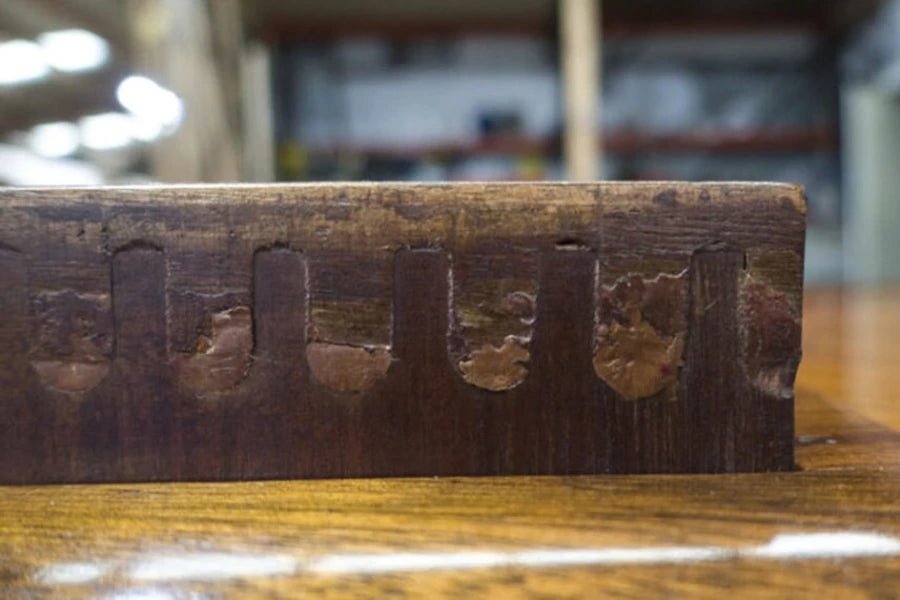Customers often ask us questions about dating furniture. One way to do this is from the dovetail joints used in its construction. More often than not the dovetails are age appropriate, and this article will explain what a dovetail is, and what to look for in a period piece to correctly date it.
What is a dovetail joint?
A dovetail is a common type of joint used to connect pieces of wood together. It is commonly used in cabinetry to join the sides of a drawers to the front.
It consists of a series of pins which are cut so they extend from the end of one board, which interlocks with a series of tails cut into the end of another board. The pins and tails are wedge shaped, similar to a jigsaw piece.
A finished dovetail joint has great tensile strength and resists being pulled apart. Once a wooden dovetail has been glued it requires no mechanical fastening such as screws or nails.
Hand-made dovetails are slightly irregular, and only really fit in one way, whereas machine cut dovetails are uniform and are often interchangeable from their original order. The dovetail technique is centuries old and can be dated back to ancient Egypt, where it was used in furniture entombed with mummies.
Dating Furniture
Early hand cut dovetails from the 17th century were wide, stubby and crude looking. By the end of the 18th century, dovetails became very fine and delicate.
The use of scalloped dovetails can be dated to the 1890s and were only used for a short time. Machine cut dovetails were common use at the end of the 1800s in factory-made pieces.
Before the use of dovetails, drawer sides were normally nailed into rebate joints cut in the of drawer front. Two to six hand forged wrought iron nails prevented the drawer front from being torn apart when the handles were pulled. In damp conditions, tannic acid in the oak timber would accelerate corrosion of the nails and drawer fronts were often ripped apart.
Another tip to dating early furniture is to look out for marks made by woodworker using small delicate saws and wood chisels. Markings around the dovetails are often visible on the inside or underside of a piece.





